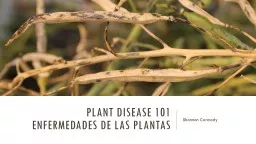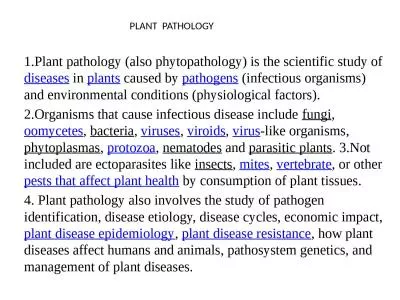PPT-Plant Disease 101 Shannon Carmody
Author : sherrill-nordquist | Published Date : 2018-03-17
What is Causing your Plant Problem Biotic living or biological Pests Fungi Bacteria Nematodes Viruses Other parasitic higher plants mollicutes and protozoa What
Presentation Embed Code
Download Presentation
Download Presentation The PPT/PDF document "Plant Disease 101 Shannon Carmody" is the property of its rightful owner. Permission is granted to download and print the materials on this website for personal, non-commercial use only, and to display it on your personal computer provided you do not modify the materials and that you retain all copyright notices contained in the materials. By downloading content from our website, you accept the terms of this agreement.
Plant Disease 101 Shannon Carmody: Transcript
Download Rules Of Document
"Plant Disease 101 Shannon Carmody"The content belongs to its owner. You may download and print it for personal use, without modification, and keep all copyright notices. By downloading, you agree to these terms.
Related Documents














